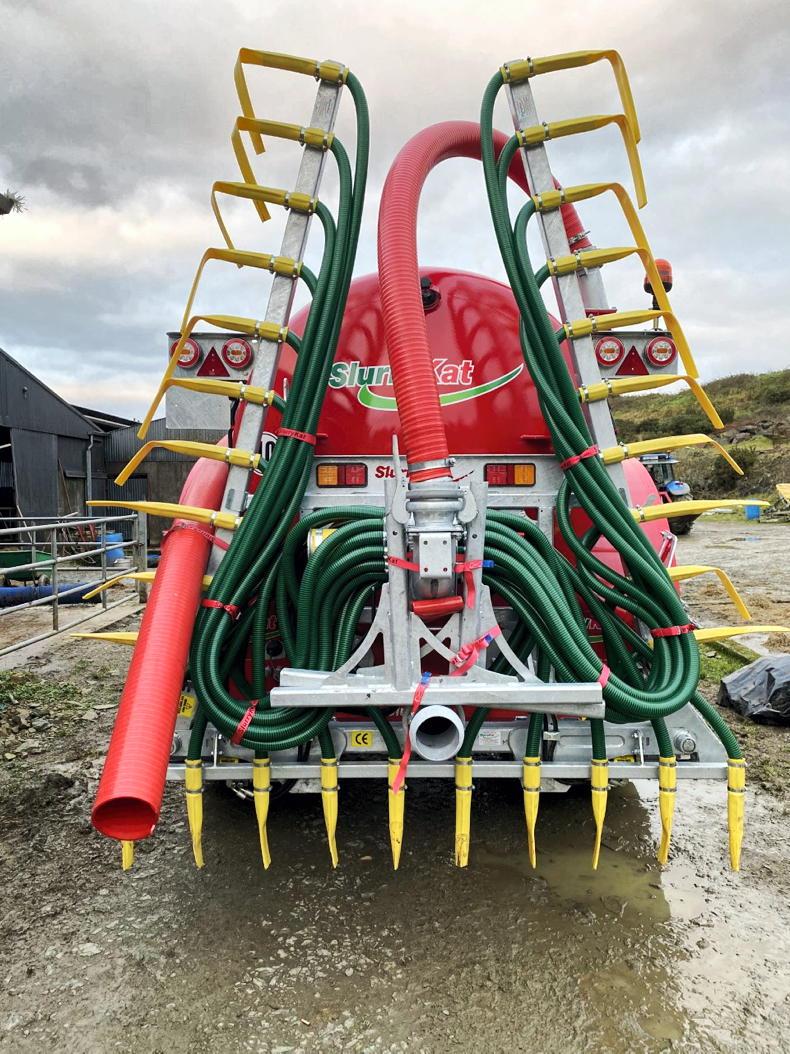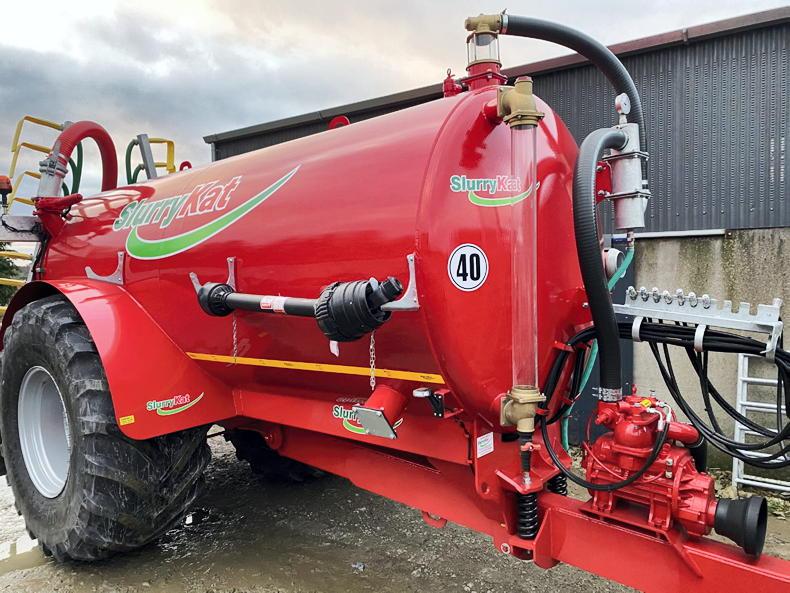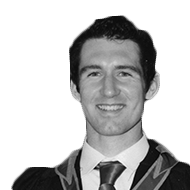As we enter February and the start of spring, we can all look forward in optimism to a better few months.
Spring is my favourite time of year and while it is busy with the onset of dairy cows calving, the longer days and warmer weather is good for the body and mind.
The suckler cows are all calved at this stage, apart from a few stragglers, and the dairy cows will commence from mid-February.
Attention will also soon turn to grass and getting the first application of protected urea out.
Machinery upgrade
This year, all straight nitrogen that will be applied will be in the form of protected urea, including the first application.
The higher costs over ‘ordinary urea’ aren’t substantial and the peace of mind in regard to losses is very worthwhile.

James Mimnagh has bought a new 2,000-gallon slurry tanker with a 7.5m dribble bar attachment.
Speaking of nutrient losses to the environment, I have invested in a new 2,000-gallon slurry tanker with a 7.5m dribble bar attachment as an upgrade from our 1,600-gallon and splash plate.
Higher nutrient retention combined with less grass contamination means I am very excited about spreading slurry this year.
Yes, I really should get out more, but this is lockdown number three after all.
Routine vaccination
A thought that frequently occurs to me during the winter is that I’m lucky to have an indoor cattle crush.
It may seem simple, but there has been days where it has either been snowing or raining and we have rolled out a vaccination, dosing and clipping programme that the HSE would be envious of.
Cows are routinely vaccinated against leptospirosis, IBR and BVD.
We are considering discontinuing the latter, as we have had no positive persistently infected return from the calf tissue samples, thankfully, going as far back to the voluntary BVD tagging era.
Grass covers
Last year, I increased the amount of grass covers which I recorded, with 30 covers completed.
This year, I am aiming to improve this, mainly by measuring more frequently during high grass growth.
I use Pasture Base to measure and find it an excellent tool to aid decision making.
Without it, I firmly believe that we would have delayed feeding silage during last year's drought by at least a week and would have subsequently run down average farm cover too far, resulting in a much longer feeding period than the 10 days that transpired.
Here's hoping for a successful calving season for everyone and by the time we approach breeding, COVID-19 will hopefully be in the rear view mirror disappearing from view.
Read more
Farmer Writes: last thing agriculture needs is instability
Farmer Writes: no cabin fever on farm during busy spring
As we enter February and the start of spring, we can all look forward in optimism to a better few months.
Spring is my favourite time of year and while it is busy with the onset of dairy cows calving, the longer days and warmer weather is good for the body and mind.
The suckler cows are all calved at this stage, apart from a few stragglers, and the dairy cows will commence from mid-February.
Attention will also soon turn to grass and getting the first application of protected urea out.
Machinery upgrade
This year, all straight nitrogen that will be applied will be in the form of protected urea, including the first application.
The higher costs over ‘ordinary urea’ aren’t substantial and the peace of mind in regard to losses is very worthwhile.

James Mimnagh has bought a new 2,000-gallon slurry tanker with a 7.5m dribble bar attachment.
Speaking of nutrient losses to the environment, I have invested in a new 2,000-gallon slurry tanker with a 7.5m dribble bar attachment as an upgrade from our 1,600-gallon and splash plate.
Higher nutrient retention combined with less grass contamination means I am very excited about spreading slurry this year.
Yes, I really should get out more, but this is lockdown number three after all.
Routine vaccination
A thought that frequently occurs to me during the winter is that I’m lucky to have an indoor cattle crush.
It may seem simple, but there has been days where it has either been snowing or raining and we have rolled out a vaccination, dosing and clipping programme that the HSE would be envious of.
Cows are routinely vaccinated against leptospirosis, IBR and BVD.
We are considering discontinuing the latter, as we have had no positive persistently infected return from the calf tissue samples, thankfully, going as far back to the voluntary BVD tagging era.
Grass covers
Last year, I increased the amount of grass covers which I recorded, with 30 covers completed.
This year, I am aiming to improve this, mainly by measuring more frequently during high grass growth.
I use Pasture Base to measure and find it an excellent tool to aid decision making.
Without it, I firmly believe that we would have delayed feeding silage during last year's drought by at least a week and would have subsequently run down average farm cover too far, resulting in a much longer feeding period than the 10 days that transpired.
Here's hoping for a successful calving season for everyone and by the time we approach breeding, COVID-19 will hopefully be in the rear view mirror disappearing from view.
Read more
Farmer Writes: last thing agriculture needs is instability
Farmer Writes: no cabin fever on farm during busy spring







 This is a subscriber-only article
This is a subscriber-only article










SHARING OPTIONS: